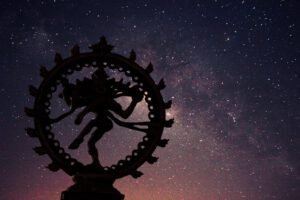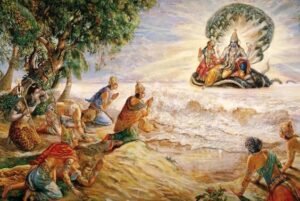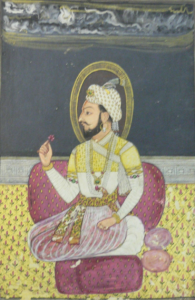1. Introduction to Sikhism
Sikhism is one of the youngest of the major world religions, having been founded in the 15th century by Guru Nanak Dev Ji in the Punjab region of the indian subcontinent. It arose during a time of social, religious, and political upheaval, providing a unique and progressive response to the injustices, inequalities, and rigid religious structures of the time. Sikhism is grounded in the belief in one formless God, known as “Ik Onkar,” and emphasizes equality, service, devotion, and honest living.
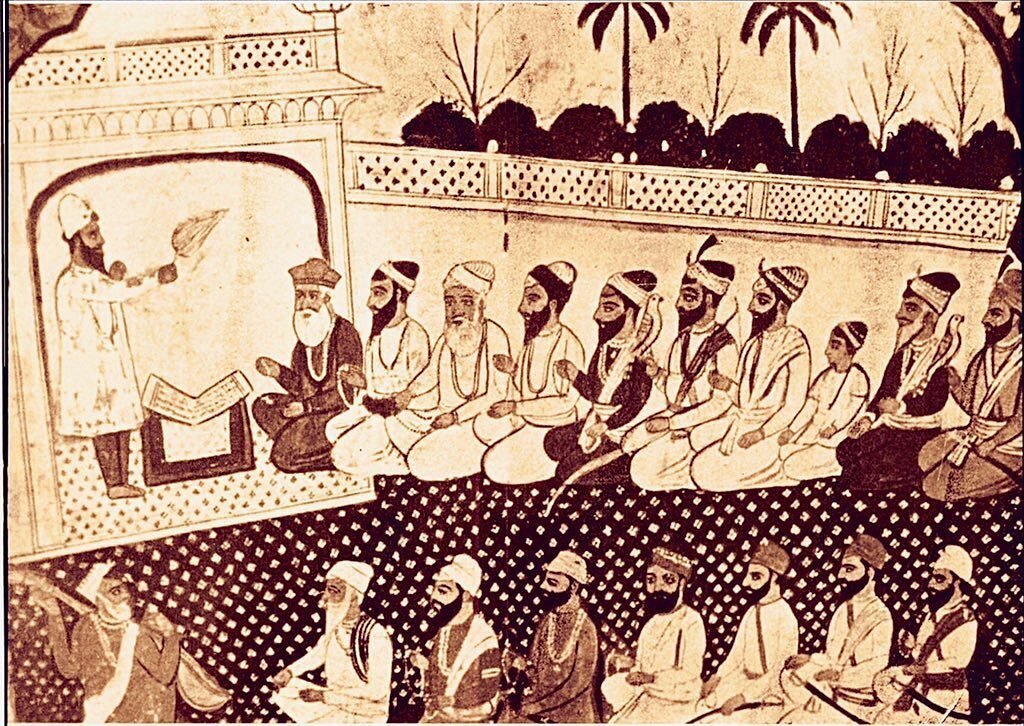
Major Beliefs in Sikhism
- Monotheism: Sikhs believe in one God, who is formless, eternal, and beyond human understanding.
- Equality: All human beings are equal in the eyes of God, regardless of caste, race, gender, or religion.
- Service (Seva): Selfless service to humanity is a core principle in Sikhism, evident in the practice of Langar (community kitchen).
- Honest Living (Kirat Karni): Sikhs are encouraged to live honestly, earn through hard work, and contribute to the welfare of others.
- Devotion (Naam Japna): Remembering God and living a life of humility and devotion.
2. Origins of Sikhism: A Response to Social and Religious Dynamics
2.1. Bhakti Movement and its Influence on Sikhism
- Sikhism was greatly influenced by the Bhakti Movement, a spiritual revival movement that emphasized devotion to a personal God over ritualistic practices.
- While this movement spanned across India, its roots are often traced back to South Indian Tamil culture, where saints like Alvars and Nayanars preached the importance of inner devotion and equality before God, rejecting the rigid caste system and elaborate religious rituals.
- As the Bhakti Movement spread northward, it deeply impacted regions like Punjab, paving the way for reformers like Guru Nanak Dev Ji to question the established religious order and caste-based hierarchies.
2.2. Sociopolitical Conditions: Muslim Invasions and Hindu Persecution
- The 15th century was also marked by the Muslim invasions of India, particularly the Mughal Empire’s spread under emperors like Babur and later Aurangzeb, who brought with them policies of religious intolerance.
- Many Hindu communities faced oppression, with forced conversions and persecution. These historical circumstances created fertile ground for a new spiritual and social movement that addressed the need for equality, religious freedom, and self-defense, all while transcending the boundaries of both Hindu and Islamic traditions.
- Sikhism arose as a response to this dual reality of spiritual revival and social-political oppression.
3. Guru Nanak Dev Ji (1469–1539): The Founder of Sikhism
Born in 1469 in Talwandi (now Nankana Sahib, Pakistan), Guru Nanak Dev Ji was the son of Mehta Kalu and Mata Tripta, who belonged to the Khatri Hindu caste. From a young age, Nanak showed an inclination toward spirituality, questioning the caste system, idol worship, and religious divisions. His travels, known as the Udasis, took him across South Asia and the Middle East, where he encountered diverse religious practices.
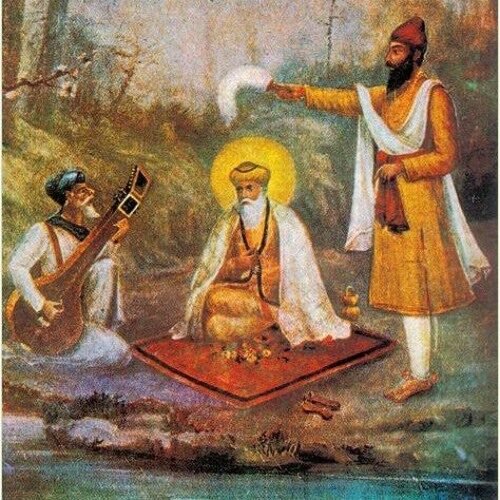
Guru Nanak’s teachings formed the foundation of Sikhism. Key tenets included:
- Oneness of God (Ik Onkar): There is only one universal, formless God.
- Equality: He rejected the caste system and declared that all human beings, irrespective of gender, caste, or religion, are equal.
- Kirat Karni (Honest Work): He emphasized honest living and labor as an essential part of spiritual life.
- Naam Japna (Meditation on God’s Name): Constant remembrance of God through devotion and meditation.
- Vand Chakna (Sharing with Others): Encouraged sharing resources and helping those in need through Langar (community kitchen).
4. The Successive Sikh Gurus
After Guru Nanak’s death in 1539, the mantle of leadership passed on to a series of nine successive Gurus. Each Guru played a crucial role in developing Sikhism, shaping it both spiritually and socially. Below is a detailed look at the contributions of each Guru.
4.1. Guru Angad Dev Ji (1504–1552)
- Original Name: Lehna
- Era Overview: Guru Angad was the second Sikh Guru and a devoted disciple of Guru Nanak. He became the Guru in 1539 after Guru Nanak appointed him as his successor.
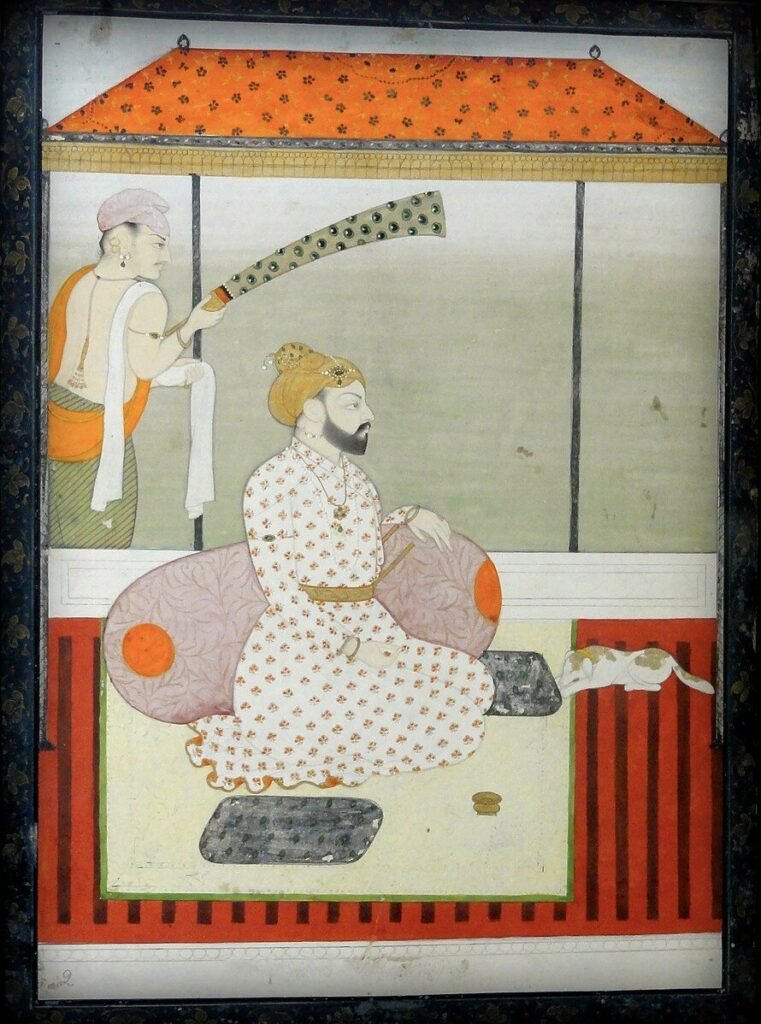
- Contributions:
- Gurmukhi Script: Guru Angad is credited with developing and standardizing the Gurmukhi script, which allowed the Sikh teachings to be written and preserved in the Punjabi language. This was a significant move toward making religious texts accessible to common people.
- Physical Education: He promoted physical fitness and established wrestling arenas to encourage a healthy body along with a healthy mind.
- Langar and Community Service: Guru Angad strengthened the practice of Langar (community kitchen) as a means to promote equality.
4.2. Guru Amar Das Ji (1479–1574)
- Original Name: Bhalla Amar Das
- Era Overview: Guru Amar Das was appointed the third Guru in 1552 and led the Sikh community through a period of great growth and organization.

- Contributions:
- Institution of Manji System: Guru Amar Das set up a decentralized system called the Manji to appoint local leaders and spread Sikh teachings throughout India.
- Langar Tradition: He reinforced the practice of communal dining (Langar), insisting that all people, regardless of caste, sit together to eat before participating in religious services.
- Empowerment of Women: He fought against the social evils of the time, such as Sati (the burning of widows), and promoted gender equality by appointing women as missionaries and religious leaders.
4.3. Guru Ram Das Ji (1534–1581)
- Original Name: Jetha
- Era Overview: Guru Ram Das, the fourth Guru, is known for laying the foundation of the holy city of Amritsar, which became the spiritual center of Sikhism.

- Contributions:
- Foundation of Amritsar: Guru Ram Das founded the city of Amritsar, where the Harmandir Sahib (Golden Temple) would later be built.
- Compositions: He contributed many hymns to the Guru Granth Sahib and formalized marriage ceremonies in Sikhism through the Anand Karaj ceremony.
4.4. Guru Arjan Dev Ji (1563–1606)
- Original Name: Arjan Mal
- Era Overview: Guru Arjan, the fifth Guru, played a pivotal role in compiling the Adi Granth and constructing the Harmandir Sahib.
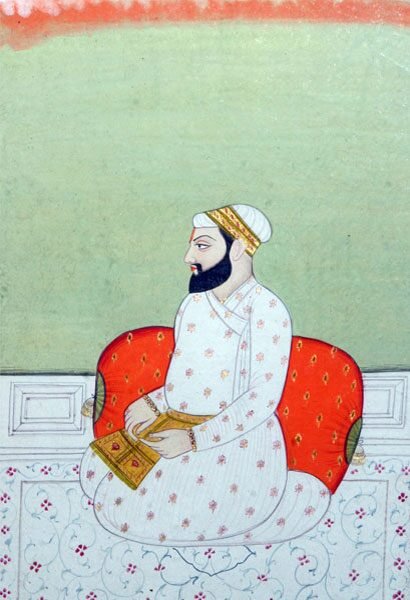
- Contributions:
- Compilation of the Adi Granth: Guru Arjan Dev compiled the sacred writings of the previous Gurus along with the hymns of Hindu and Muslim saints into the Adi Granth (the precursor to the Guru Granth Sahib).
- Harmandir Sahib: He constructed the Harmandir Sahib (Golden Temple) in Amritsar, making it the spiritual nucleus of Sikhism.
- Martyrdom: Guru Arjan was arrested, tortured, and executed by the Mughal Emperor Jahangir in 1606. His martyrdom marks a turning point in Sikh history, as it led to the militarization of the Sikh community in defense against oppression.
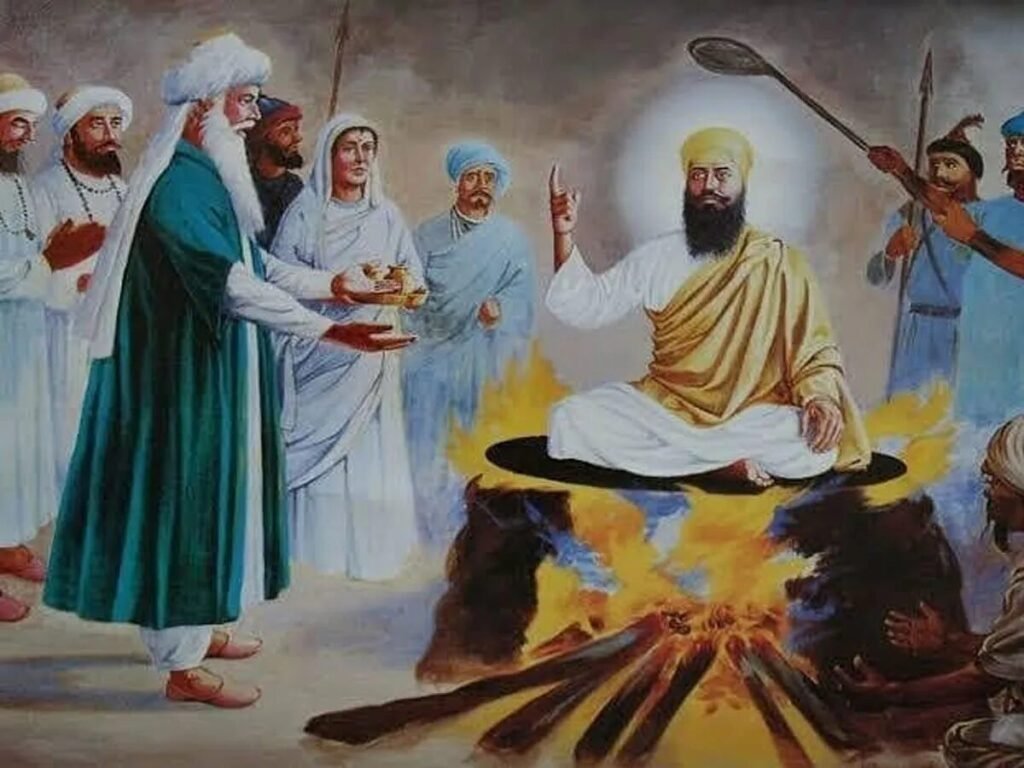
4.5. Guru Hargobind Ji (1595–1644)
- Original Name: Hargobind Rai
- Era Overview: Following the martyrdom of Guru Arjan Dev Ji, Guru Hargobind took a more assertive stance, emphasizing both spiritual and temporal authority.
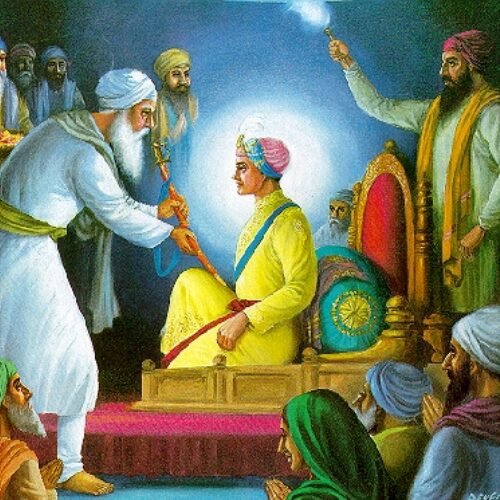
- Contributions:
- Miri and Piri: Guru Hargobind introduced the concept of Miri and Piri, symbolizing the balance of spiritual and worldly power. He wore two swords representing these principles.
- Establishment of Akal Takht: He established the Akal Takht in Amritsar, which served as the seat of Sikh temporal authority.
- Militarization: Guru Hargobind militarized the Sikh community, training them in the art of warfare to defend themselves against Mughal oppression.
4.6. Guru Har Rai Ji (1630–1661)
- Original Name: Har Rai
- Era Overview: Guru Har Rai was a peace-loving Guru who continued the militarization started by Guru Hargobind while also emphasizing service and compassion.
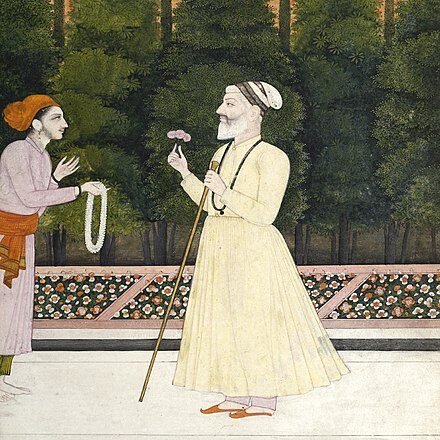
- Contributions:
- Compassionate Leadership: He provided medical care to people from all communities and maintained a balance between militarization and spiritual leadership.
- Expansion of Sikhism: Under his leadership, the Sikh community grew, and its message of tolerance spread further.
4.7. Guru Har Krishan Ji (1656–1664)
- Original Name: Har Krishan
- Era Overview: Guru Har Krishan became Guru at the age of five and served for a brief period before his untimely death at the age of eight.
- Contributions:
- Service to Humanity: During a smallpox epidemic in Delhi, Guru Har Krishan selflessly served the sick and the suffering, earning the title Bala Pir (child prophet). His self-sacrifice is deeply revered.
4.8. Guru Tegh Bahadur Ji (1621–1675)
- Original Name: Tyag Mal
- Era Overview: Guru Tegh Bahadur, the ninth Guru, is most famous for his martyrdom in defense of religious freedom.
- Contributions:
- Defense of Hindu Rights: Guru Tegh Bahadur is remembered for sacrificing his life to protect the right of Hindus to practice their religion freely. He stood against the forced conversions imposed by Mughal Emperor Aurangzeb.
- Martyrdom: His execution in Delhi in 1675 further solidified Sikhism’s stance against religious persecution and oppression.
4.9. Guru Gobind Singh Ji (1666–1708)
- Original Name: Gobind Rai
- Era Overview: Guru Gobind Singh, the tenth and final human Guru, radically transformed Sikhism by formalizing the Khalsa and laying the foundation for the modern Sikh identity.
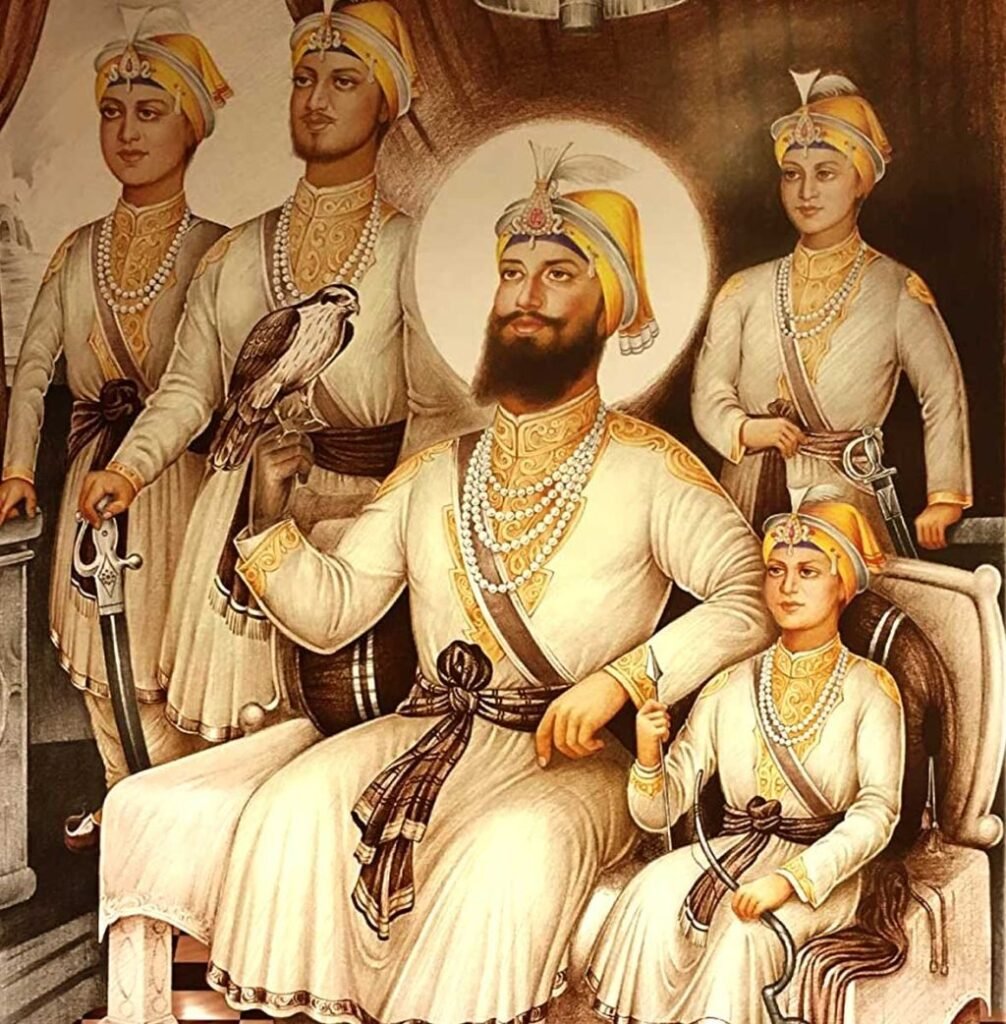
- Contributions:
- Creation of the Khalsa: On April 13, 1699, during the festival of Baisakhi, Guru Gobind Singh initiated the Khalsa, a brotherhood of saint-soldiers devoted to protecting the oppressed and upholding righteousness.
- The Five Ks: He established the five symbols of the Khalsa (the Five Ks: Kesh, Kara, Kanga, Kirpan, and Kachera) to create a distinct Sikh identity.
- End of the Line of Human Gurus: Before his death, Guru Gobind Singh declared that the Guru Granth Sahib would be the eternal Guru of the Sikhs, marking the end of the line of human Gurus.
5. Sikh Scriptures
5.1 Guru Granth Sahib: The Eternal Guru
The Guru Granth Sahib is the central religious scripture of Sikhism and is considered the eternal living Guru. It contains the hymns and writings of the Sikh Gurus as well as saints from other religious traditions, including Hinduism and Islam, who shared a similar spiritual vision. Compiled by Guru Arjan Dev Ji, the Guru Granth Sahib is unique in its approach to spirituality, inclusivity, and respect for all religions.
- Compilation: The Adi Granth was initially compiled by Guru Arjan Dev Ji in 1604. Guru Gobind Singh Ji later added the hymns of Guru Tegh Bahadur Ji and declared it the eternal Guru.
- Language: The Guru Granth Sahib is written in Gurmukhi, and it incorporates several languages, including Punjabi, Sanskrit, Persian, and Hindi.
- Themes: It covers a wide array of spiritual themes, focusing on devotion to God, the unity of humanity, equality, and social justice. It rejects ritualism, emphasizing internal spiritual development.
- Role in Sikh Life: The Guru Granth Sahib is the final authority in all matters of Sikh spirituality and practice. Sikhs regard it as their guide for all aspects of life.
5.2 Dasam Granth
This is another important scripture in Sikhism, attributed to Guru Gobind Singh Ji. It contains a mix of spiritual and martial poetry, aimed at inspiring Sikhs to take up arms in defense of righteousness.
6. Sikh Pilgrimage Sites
Sikhs have several important pilgrimage sites across India and Pakistan. These sites are not seen as places to attain salvation but rather to connect with the faith’s history and heritage.
6.1 Harmandir Sahib (Golden Temple), Amritsar
The most significant pilgrimage site in Sikhism, it was founded by Guru Ram Das and completed by Guru Arjan Dev Ji. The Golden Temple symbolizes Sikhism’s open-door policy, as it welcomes people from all religions and backgrounds.
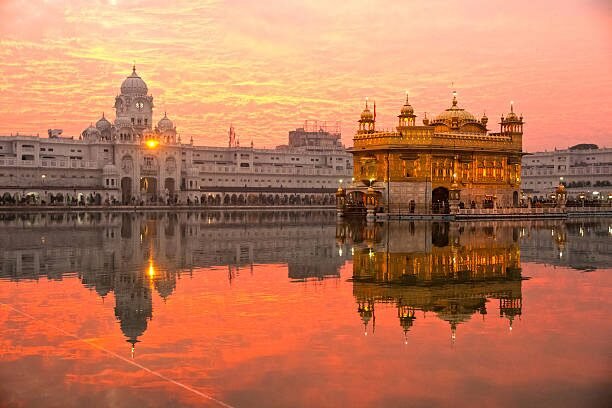
6.2 Takht Sri Patna Sahib, Bihar
The birthplace of Guru Gobind Singh Ji, this is one of the five Takhts (thrones) of Sikh authority.
6.3 Gurdwara Janam Asthan, Nankana Sahib, Pakistan
This site marks the birthplace of Guru Nanak Dev Ji and is an important pilgrimage site for Sikhs.
6.4 Anandpur Sahib, Punjab
This is where Guru Gobind Singh Ji established the Khalsa in 1699, and it holds great importance for Sikhs.
6.5 Hazur Sahib, Nanded, Maharashtra
The place where Guru Gobind Singh Ji passed away, it is one of the five Takhts.
6.6 Gurdwara Bangla Sahib, Delhi
This site is associated with Guru Har Krishan Ji and his compassionate service during a smallpox epidemic.
7. The Khalsa and Sikh Identity
7.1 Formation of the Khalsa
Guru Gobind Singh Ji created the Khalsa on April 13, 1699, during the festival of Baisakhi. The Khalsa was intended to be a group of baptized Sikhs, committed to living by the highest standards of Sikh discipline and being prepared to fight against tyranny. The ceremony of initiation involves Amrit Sanchar (baptism by Amrit).

7.2 The Five Ks
Every baptized Sikh (Khalsa) is expected to maintain five physical symbols of their faith, known as the Five Ks:
- Kesh: Uncut hair, symbolizing devotion to God’s will.
- Kangha: A wooden comb, symbolizing cleanliness and order.
- Kara: A steel bracelet, representing restraint and unity.
- Kirpan: A ceremonial sword, symbolizing the defense of truth and justice.
- Kachera: Cotton undergarments, symbolizing self-control and moral character.
8. Sikhism Today
Sikhism continues to flourish globally, with large Sikh populations in India, the UK, Canada, the US, and Australia. Sikh teachings have resonated with millions due to their emphasis on social justice, gender equality, and community service. Sikh communities are known for their Langar services, providing free meals to people of all religions and backgrounds.


